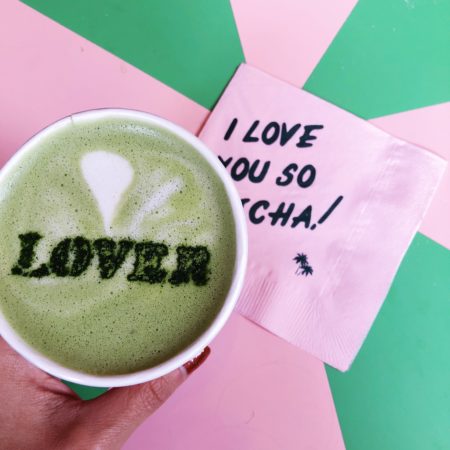Unless you’re living under a rock, you’ve likely heard of matcha! Whether or not you’ve tried it (and like it!) may be another story. As someone who has loved the green tea beverage from first sip, I’m partial to matcha and all of its many health benefits. However, if you’ve never tried it or you’re matcha-curious but have yet to dive into a cup, here’s a quick guide to matcha for beginners.
What is Matcha?
Matcha is a centuries-old Japanese tradition – the finely ground powder of shade-grown green tea plants. Because matcha is made from the whole tea leaf, it’s a powerful superfood in and of itself. And while the tradition of matcha is age-old, the wellness industry has recently seen a boom in its popularity perhaps because matcha is experiencing a reinvention in the way it’s consumed. From lattes to baked goods, there are currently endless ways to reap the health benefits of matcha.
Why Matcha?
You’re probably aware of the numerous health benefits of green tea, but if not, here’s a quick refresher – it contains natural chemicals that give it anti-inflammatory and anti-carcinogenic properties, it promotes clear, healthy skin and also aids metabolism for easier weight loss. Now, imagine a drink that’s even more powerful than a standard green tea bag and you’ve got matcha!
Matcha is basically super-powered green tea and these are just a few of the benefits:
- High levels of antioxidants
- Increased energy
- Less brain fog
- Calming, despite the caffeine levels (contains L-theanine which promotes relaxation)
- Better digestion
- Reduced bloating
- Weight management
- Body detoxification
In addition to its mega-antioxidant benefits, matcha packs a nutritional punch with higher levels of vitamins, minerals and amino acids than traditional green tea.
How to Buy Matcha
A quick google search reveals no shortage of matcha available for purchase, but be careful when buying your own. If you’re enjoying it purely to sip latte-style, get ceremonial grade. Want to cook and bake with it or make your own lattes with plant-based milks? Buy culinary grade matcha. Pay attention to quality, grade, origin and price. Less expensive matcha may contain fillers or lack the quality of true matcha which renders the health benefits less effective.
My favorite is Mathchabar’s ceremonial grade matcha.
How to Make Matcha
If you’re a coffee lover trying to kick the caffeine habit, try substituting your daily cup with matcha. Although the caffeine levels are higher than bagged green tea, the result is a calm, focused energy rather than the jittery buzz that coffee tends to provide. Just ask my husband, David, who is slowly replacing his afternoon cup of java with matcha. When I asked him how he felt after a cup, his reponse? “Calm.”
If you’re up for trying your own matcha at home, here’s how to get started:
Sift 1 tsp matcha green tea powder
Add a splash of not-quite-boiling water
Mix briskly with a matcha whisk until blended
Add your liquid of choice – more hot water or your choice of milk – whole, almond, coconut, hemp, macadamia and cashew milks are all good choices.
Enjoy!




Leave a Reply